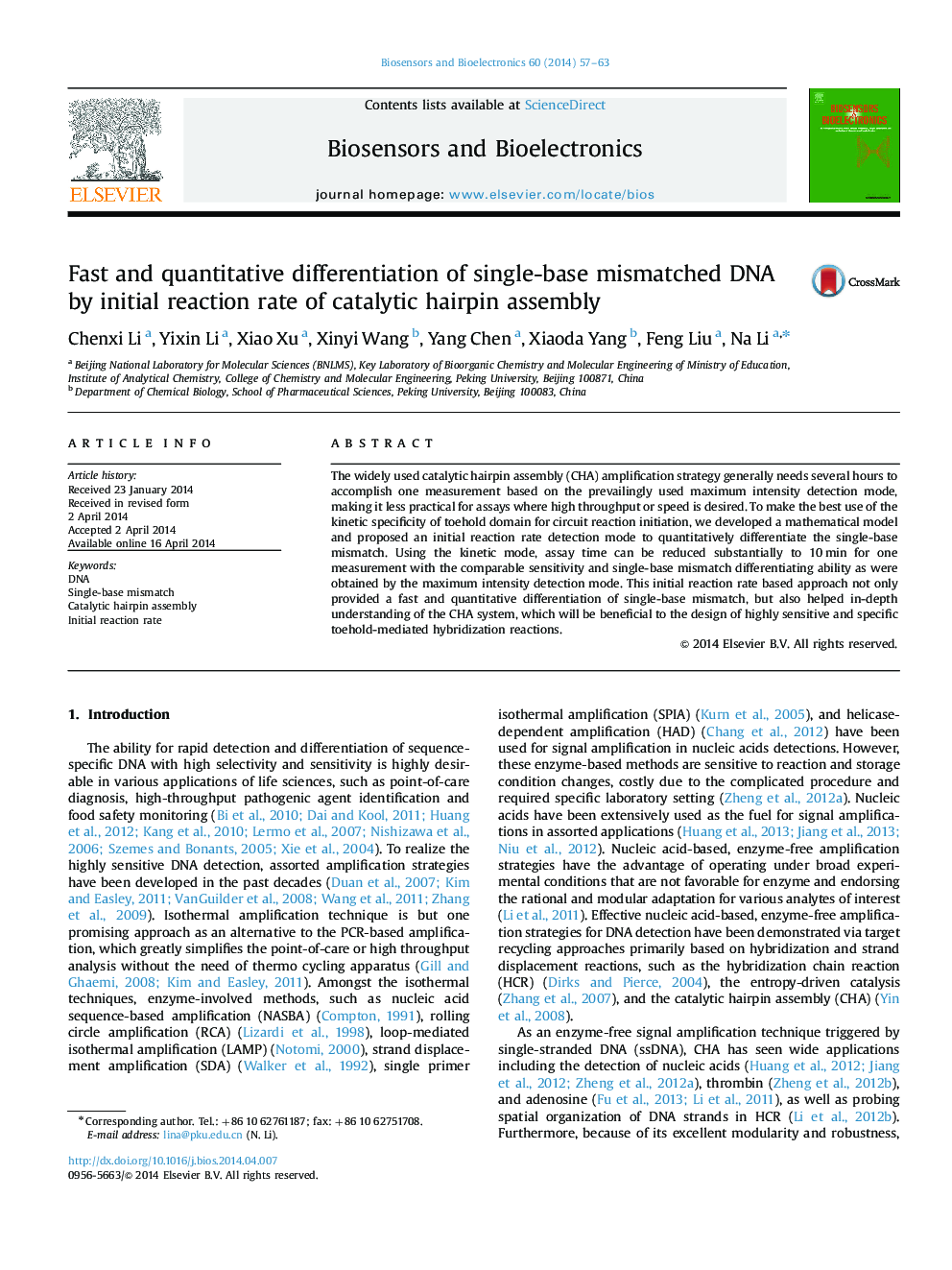| Article ID | Journal | Published Year | Pages | File Type |
|---|---|---|---|---|
| 866416 | Biosensors and Bioelectronics | 2014 | 7 Pages |
•A CHA circuit was designed for differentiating single-base mismatched DNA.•Initial reaction rate was proposed and validated for quantitative detection.•Toehold length, mismatch site and type effects on differentiation were studied.•Data acquisition time for one CHA reaction was reduced from hours to 10 min.•Differentiating ability and sensitivity were comparable to maximum intensity mode.
The widely used catalytic hairpin assembly (CHA) amplification strategy generally needs several hours to accomplish one measurement based on the prevailingly used maximum intensity detection mode, making it less practical for assays where high throughput or speed is desired. To make the best use of the kinetic specificity of toehold domain for circuit reaction initiation, we developed a mathematical model and proposed an initial reaction rate detection mode to quantitatively differentiate the single-base mismatch. Using the kinetic mode, assay time can be reduced substantially to 10 min for one measurement with the comparable sensitivity and single-base mismatch differentiating ability as were obtained by the maximum intensity detection mode. This initial reaction rate based approach not only provided a fast and quantitative differentiation of single-base mismatch, but also helped in-depth understanding of the CHA system, which will be beneficial to the design of highly sensitive and specific toehold-mediated hybridization reactions.
Graphical abstractFigure optionsDownload full-size imageDownload as PowerPoint slide
